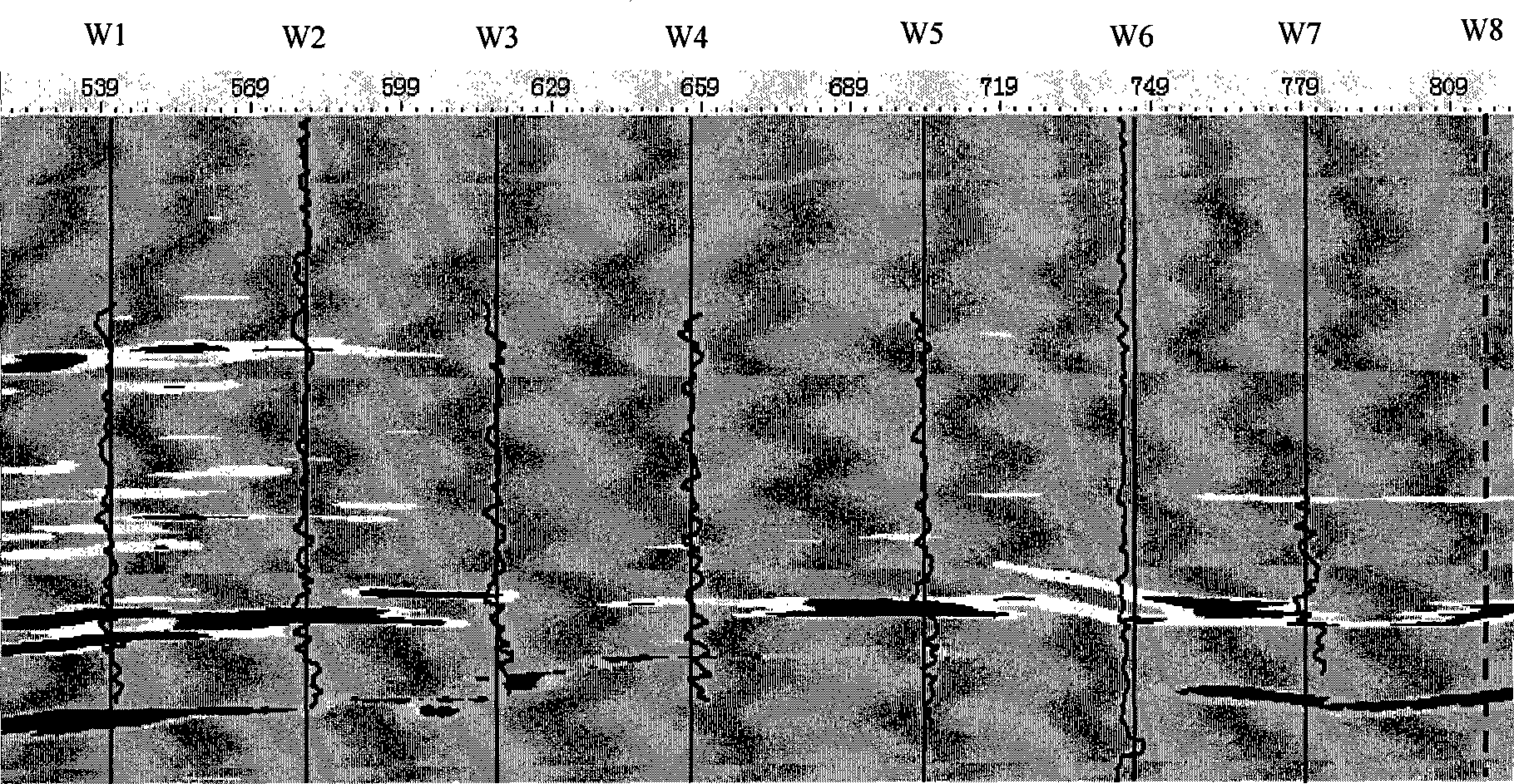Multi-parameter amalgamation gas deposit detection method for earthquake
A detection method and multi-parameter technology, applied in seismic signal processing, seismology for logging records, etc., which can solve the problems of inconsistent detection results of multiple observations, incomplete collection of geophysical data, and complex underground environment.
- Summary
- Abstract
- Description
- Claims
- Application Information
AI Technical Summary
Problems solved by technology
Method used
Image
Examples
example 1
[0050] There are two targets in the system, which are gas reservoirs (target a) and non-gas reservoirs (target b), then the identification frame of gas reservoirs is Θ={a, b}, and the focal elements are {a}, {b} and {a, b}. There are 4 properties, Lame constant, shear modulus, density and Poisson's ratio, with A i said, A i ={Lame constant, shear modulus, density, Poisson's ratio}. Let's take the Lame constant as an example (other attribute parameters are similar), and the specific implementation steps are:
[0051] 1. Collect seismic data, perform conventional pre-stack denoising, surface consistent amplitude compensation, static correction and dynamic correction to form gather data.
[0052] 2. Use the conventional pre-stack seismic inversion method to invert the Lame constant, shear modulus, and density (observation data) of the formation from the gather data, and calculate Poisson's ratio, and use the following formula to calculate Lame constant, shear modulus Gaussian...
example 2
[0081] The gas field in Example 2 is a braided river deposit, with large lateral variation and poor continuity of the reservoir. The difference between Example 2 and Example 1 is that it has three attributes, namely, P-wave velocity, S-wave velocity and Poisson's ratio. Obtain m in the same way as Example 1 vp (a), m vp (b), m vp (a, b), m vs (a), m vs (b), m vs (a, b) and m σ (a), m σ (b), m σ (a,b). to m vp (a), m vs (a) and m σ (a) is fused to get m(a); for m vp (b), m vs (b) and m σ (b) fusion, get m(b); m vp (a, b), m vs (a, b) and m σ (a, b) is fused to get m(a, b). Gas reservoir detection is performed according to the values of m(a), m(b) and m(a, b). Figure 4 The gas reservoir prediction results of a survey line are shown. There are only 2 wells on this line, both of which are gas wells, consistent with the predicted results.
PUM
 Login to View More
Login to View More Abstract
Description
Claims
Application Information
 Login to View More
Login to View More - R&D Engineer
- R&D Manager
- IP Professional
- Industry Leading Data Capabilities
- Powerful AI technology
- Patent DNA Extraction
Browse by: Latest US Patents, China's latest patents, Technical Efficacy Thesaurus, Application Domain, Technology Topic, Popular Technical Reports.
© 2024 PatSnap. All rights reserved.Legal|Privacy policy|Modern Slavery Act Transparency Statement|Sitemap|About US| Contact US: help@patsnap.com










